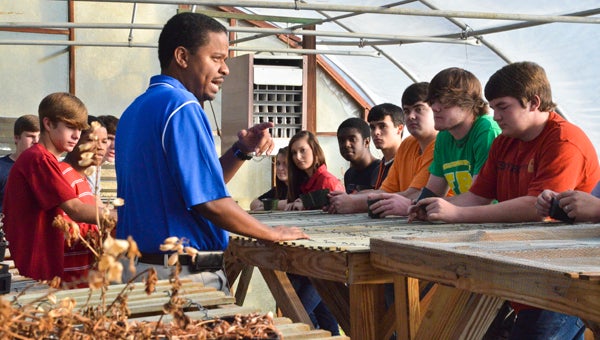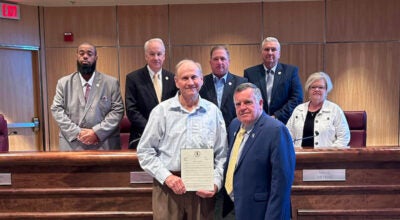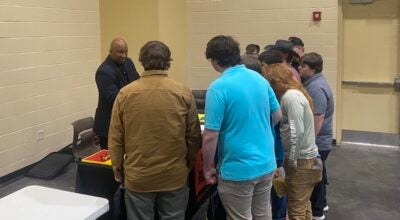New greenhouse to benefit students, city
Published 6:00 pm Thursday, October 25, 2012

CCHS Agriscience teacher Marlon Harton talks to his students Thursday about how to propagate plants from seeds in the fall months, something they will be able to do in the new greenhouse that will operate year-round.
A project to build a new greenhouse at Chilton County High School is expected to benefit more than just the school.
CCHS Agriscience students will have access to the greenhouse, not only for their classes at the high school and LeCroy Career Technical Center, but also for nursing plants that will be placed in Clanton’s downtown area by the Clanton Beautification Committee.
Marlon Harton, agriscience teacher at CCHS, and Tommy Glasscock, career tech supervisor and director at LeCroy, both recognized the need for a new greenhouse at the county’s largest high school and devised a way to acquire sufficient funding for it, while also helping the city with its beautification projects.
“Back in the summer, we just approached the city with this proposal to do some kind of partnership there between our agriscience program and the city,” Harton said. “They accepted it.”
At its meeting Oct. 16, the Chilton County Board of Education voted in favor of taking bids on the project, which is expected to total about $40,000.
The city of Clanton will pay for half of the project, and LeCroy will provide matching funds for the other half, according to Glasscock, who oversees the career tech center’s agriscience program for all county schools.
“We’re referring to it as a matching grant,” Harton said. “I think it’s a great opportunity. We’re just looking forward to working with the beautification committee of the city.”
Every fall and spring, the beautification committee places plants in certain spots downtown twice a year, according to conversation at a recent Clanton City Council meeting.
In the current greenhouse, students would not be able to nurse flowers and plants for the city in the fall because the facility has no cooling system.
Presently, students only have from January until April or May to use the greenhouse.
“We don’t have a way of cooling it,” Harton said. “All we have is a way of heating it. We can’t use it in the summertime.”
However, the new greenhouse will operate all year long with cooling pads and more space, creating an environment conducive to growing a wider variety of plants.
The new greenhouse will measure 24 feet wide and 42 feet long and will be built where the current one (18 feet by 30 feet) stands on the north end of campus, adjacent to the agriscience department.
Harton said construction is expected to begin in about six weeks, after the current greenhouse is demolished, specifications for the new one are put together and project bids are returned.
Once the new greenhouse is completed, about 175 students annually will be able to utilize it for their agriscience classes, Future Farmers of America (FFA) curriculum and the city’s beautification needs.
Students will learn more about nursing plants through all seasons; propagating new ones from seeds, cutting and plugs; and how to properly run a full-time greenhouse.
“It’s quite a few skills involved in greenhouse management,” Harton said. “We’ll have to tweak what we do. I think this is going to broaden the variety of plants they’re going to be handling.”
The new greenhouse will also be available for use during the summer for students in the Supervised Agricultural Experience (SAE) program.
“I’m excited about it,” Harton said. “We’ve wanted to do this a long time.”






